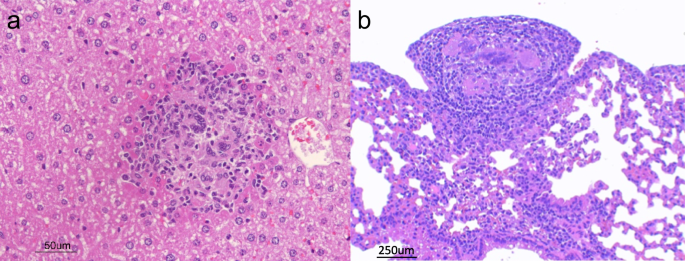在自由放养野猪疫区的野生啮齿动物中未检测到微分枝杆菌感染
IF 1.8
3区 生物学
Q3 ECOLOGY
引用次数: 0
摘要
野生小啮齿动物被认为是微分枝杆菌的天然宿主,微分枝杆菌是结核分枝杆菌复合体(MTBC)的一员,可引起人类和动物的结核病(TB),并干扰目前牲畜的结核病根除计划。在加泰罗尼亚比利牛斯山脉(伊比利亚半岛)以前曾从野猪中分离出微支原体的地区开展了一项横断面研究,以评估微哺乳动物在本次疫情流行病学中的作用。在连续2个自然年的春季和秋季共解剖野生啮齿动物350只(鼠科306只,鼠科44只)。通过组织病理学分析组织以寻找结核样病变,并通过qPCR和培养检测MTBC。采用mbc特异性ELISA检测血清。未确认野生啮齿动物中有结核感染的证据。结果表明,小型啮齿类动物在该地区微恙螨的流行病学中不起作用。这种分枝杆菌的来源尚不清楚,但以前在法国南部各种物种中检测到的微支原体表明,在伊比利亚半岛发现的疫情最可能的源头是穿越法国比利牛斯山脉的野猪的运动。本文章由计算机程序翻译,如有差异,请以英文原文为准。

Lack of detection of Mycobacterium microti infection in wild rodents from a free-ranging wild boar outbreak area
Abstract Wild small rodents are considered the natural reservoirs of Mycobacterium microti , a member of the Mycobacterium tuberculosis complex (MTBC) that can cause tuberculosis (TB) in humans and animals, as well as interfere with current tuberculosis eradication plans in livestock. A cross-sectional study was carried out in the Catalan Pyrenees (Iberian Peninsula) in an area where M. microti was previously isolated from wild boars, to evaluate the role of micromammals in the epidemiology of this outbreak. A total of 350 wild rodents were necropsied (306 Murinae and 44 Arvicolinae) in spring and autumn during two consecutive natural years. Tissues were analyzed by histopathology to look for TB-like lesions and by qPCR and culture to detect MTBC. Sera were analyzed by MTBC-specific ELISA. No evidence of TB infection in wild rodents was confirmed. Results suggest that small rodents did not play a role in the epidemiology of M. microti in the area. The source of this mycobacterium remains unknown, but previous detections of M. microti in various species in southern France suggest the movements of wild boars across the French Pyrenees as the most likely origin of the outbreak detected in the Iberian Peninsula.
求助全文
通过发布文献求助,成功后即可免费获取论文全文。
去求助
来源期刊
CiteScore
3.40
自引率
5.00%
发文量
68
审稿时长
2 months
期刊介绍:
European Journal of Wildlife Research focuses on all aspects of wildlife biology. Main areas are: applied wildlife ecology; diseases affecting wildlife population dynamics, conservation, economy or public health; ecotoxicology; management for conservation, hunting or pest control; population genetics; and the sustainable use of wildlife as a natural resource. Contributions to socio-cultural aspects of human-wildlife relationships and to the history and sociology of hunting will also be considered.

 求助内容:
求助内容: 应助结果提醒方式:
应助结果提醒方式:


